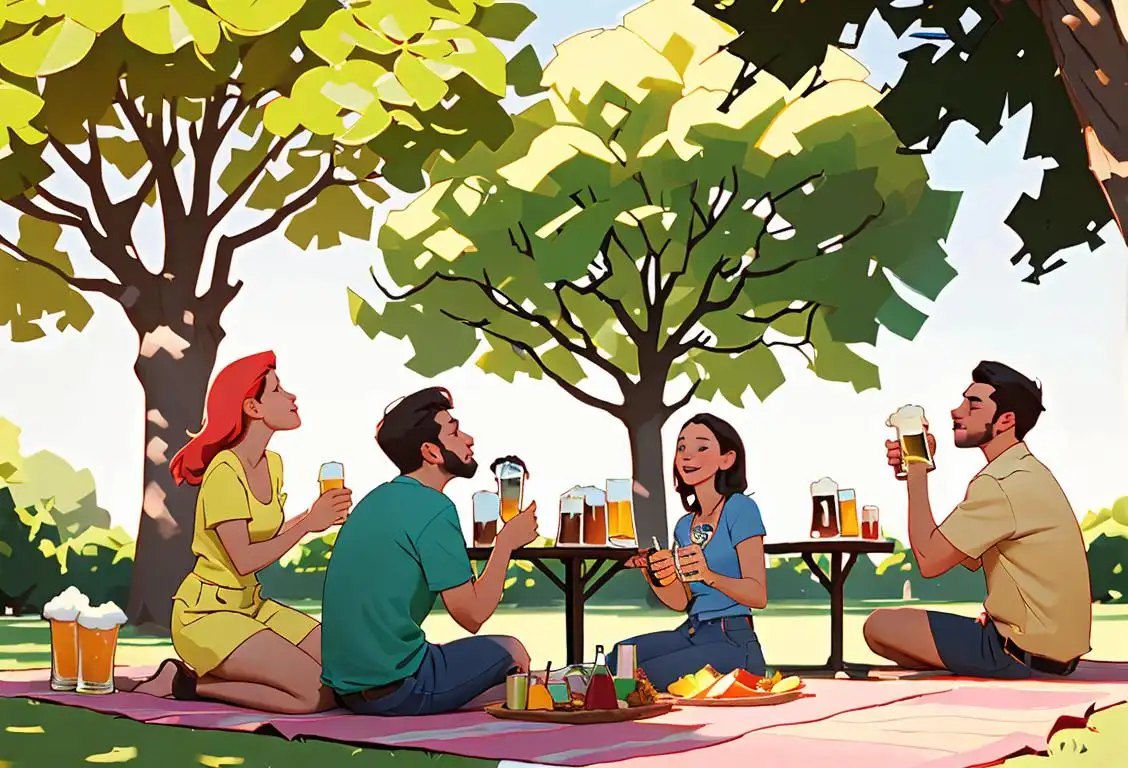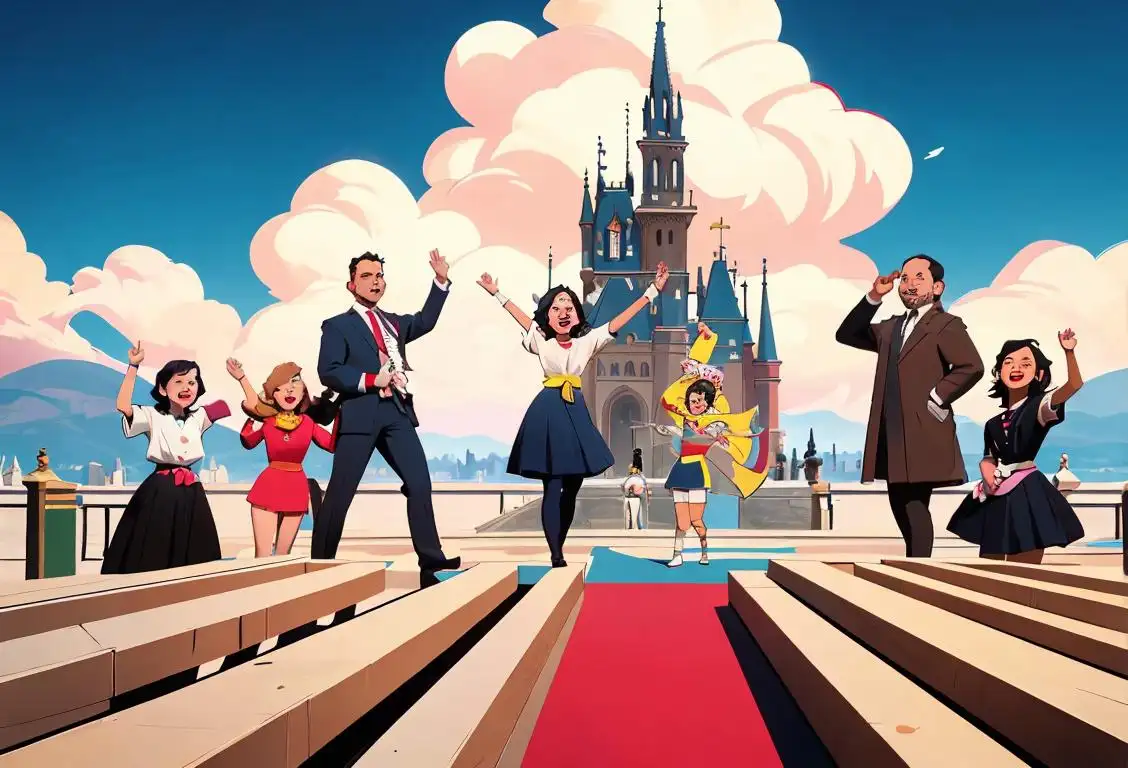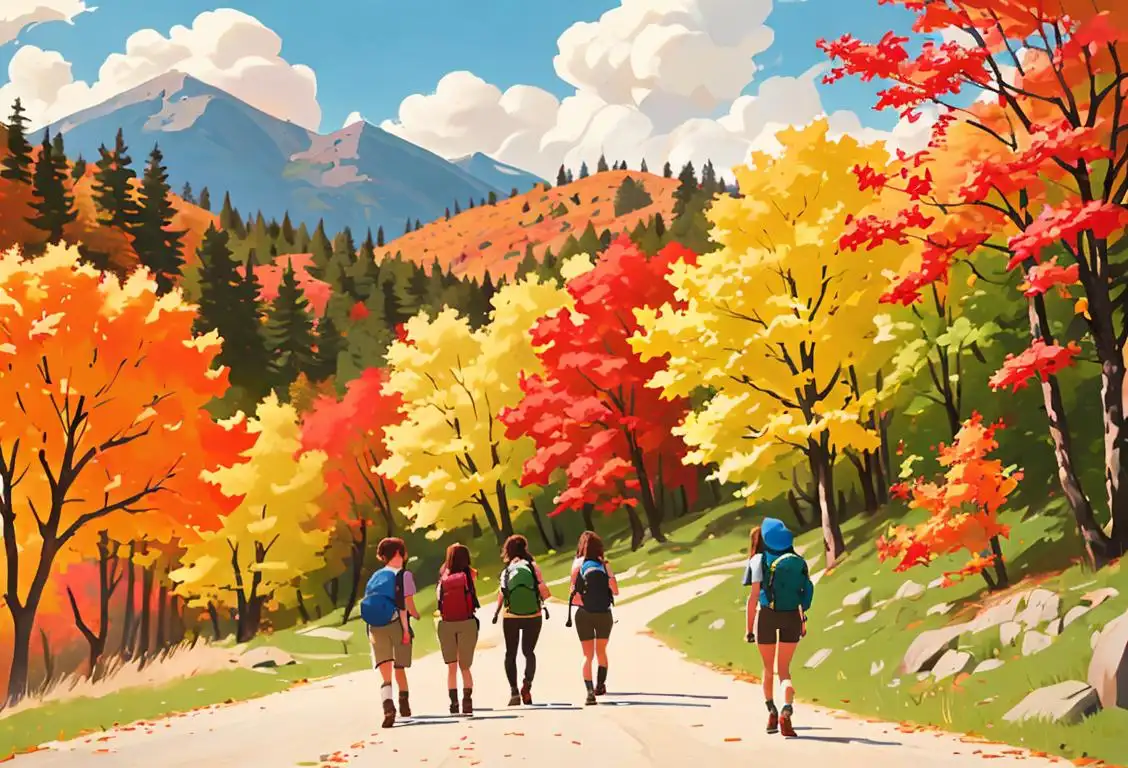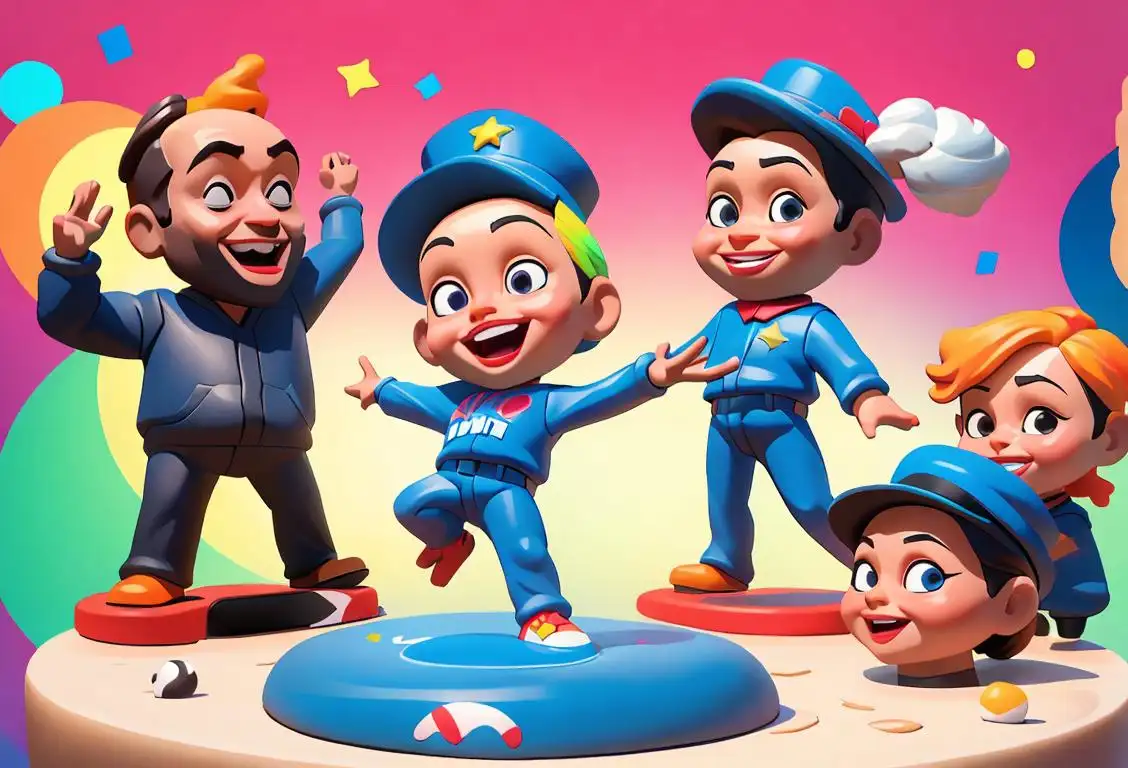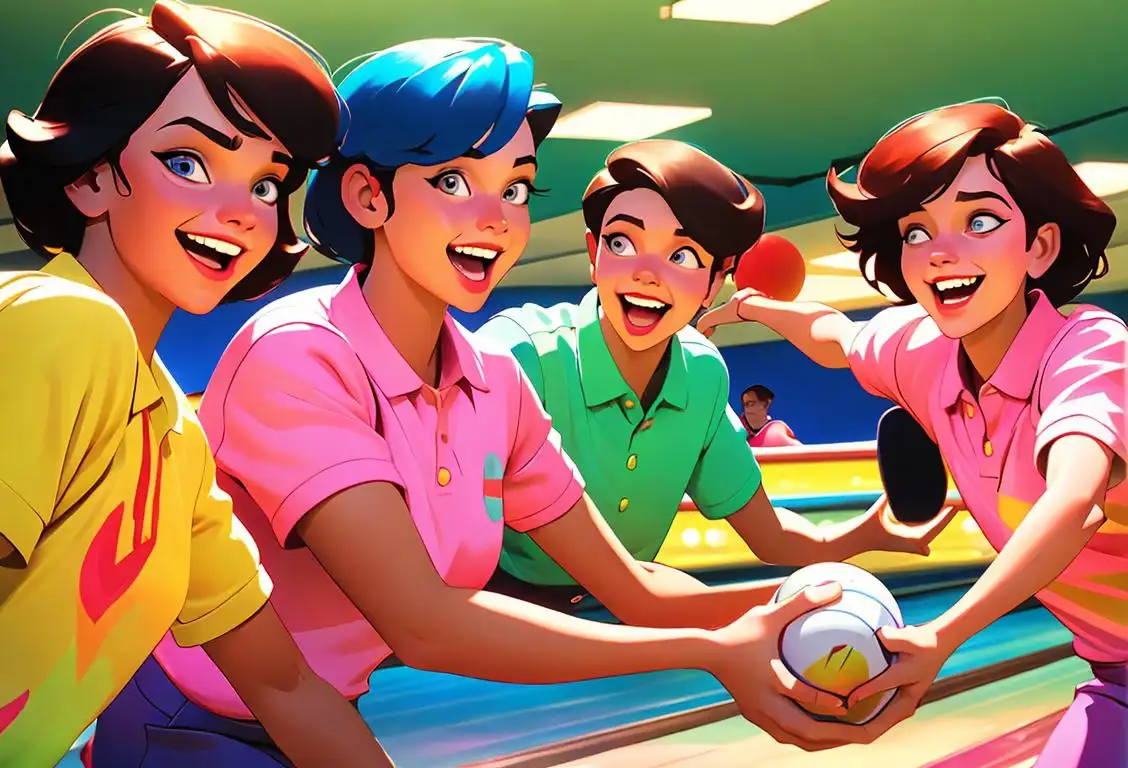National Mini Golf Day
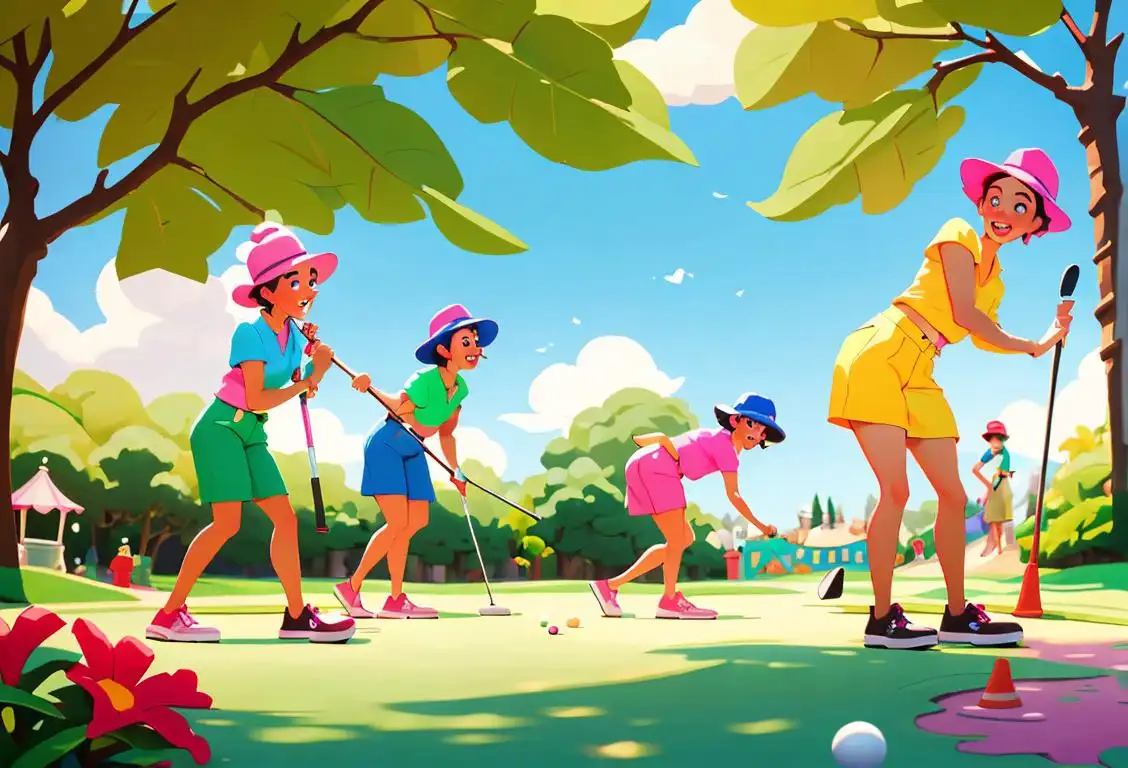
Welcome to the wacky and wonderful world of National Mini Golf Day! Get ready to putt-putt your way through this delightful article that will have you grabbing your colorful golf clubs and tiny balls in no time.
When is Mini Golf Day?
It's national mini golf day on the 21st September.
The Birth of Mini Golf
Do you love golf but find yourself frustrated by the long courses, strict dress codes, and all the fancy jargon? Well, National Mini Golf Day was made for you! This miniaturized version of the beloved sport has been entertaining families and friends for decades.
Mini golf, also known as miniature golf or putt-putt, first rose to popularity in the early 20th century. It was a way for people to enjoy the fun of golf without needing a massive expanse of land or fancy golf clubs. Instead, players navigate through a whimsical course filled with obstacles, windmills, and water features.
Believe it or not, this miniature version of golf quickly became a hit across the country. People of all ages flocked to the colorful courses, enjoying the challenge and the sense of camaraderie that came with it.
Fun for Everyone
One of the greatest things about mini golf is that it's suitable for everyone. Whether you're a pro golfer or someone who has never picked up a club before, you can still have a blast playing mini golf. The courses are designed to be enjoyable and not overly challenging, making it a perfect activity for families, friends, and even romantic dates.
Plus, there's just something endlessly entertaining about watching your ball navigate through various obstacles and avoiding the clutches of a hungry plastic alligator.
National Mini Golf Day Celebrations
On National Mini Golf Day, mini golf courses across the country invite players to come and enjoy a day of fun-filled putt-putt action. Many courses offer special discounts or even free rounds to celebrate this whimsical holiday.
Gather your loved ones, lace up your golf shoes (or any comfortable shoes, really), and head out to your nearest mini golf course. Spend the day challenging your friends to a friendly competition, laughing at near-miss shots, and reveling in the joy of mini golf.
Remember to channel your inner golf superstar as you do your victory dance after sinking that impossible hole-in-one shot!
History behind the term 'Mini Golf'
1867
Birth of the Term
The term 'mini golf' originated in 1867 when the Ladies' Putting Club of St. Andrews was established in Scotland. The club was formed to encourage women to play golf, but due to societal norms at the time, they were not allowed to play on the full-size golf courses. As a result, they created their own miniature version called 'Putting Green Golf.' This laid the foundation for what would later be known as mini golf.
1867
Birth of the term 'golf'
The term 'golf' is believed to have originated in Scotland during the 15th century. The word 'golf' is derived from the Dutch word 'kolf' which means 'club'. It was initially used to describe a game played with a stick and a ball.
1867
The Beginning: Croquet Putting
In 1867, the concept of mini golf can be traced back to the sport of croquet putting. People would set up small putting areas in their gardens, only using a few holes instead of a full course. This casual and smaller version of putting laid the foundation for what would later become mini golf.
1867
Origins of Golf
The term 'mini golf' traces its roots back to the origins of golf itself. Golf, as we know it today, originated in 15th century Scotland. The game gained popularity over the years and spread to different parts of the world.
1916
Birth of miniature golf
In 1916, the term 'miniature golf' was born. The first mini golf course, known as the Thistle Dhu (which means 'This'll Do' in Scottish dialect), was constructed in Pinehurst, North Carolina. The course was designed by James Barber and Donald J. Ross to attract women to the sport of golf. This initial endeavor had only 18 holes and featured scaled-down obstacles and putting greens. Miniature golf gained popularity as a family-friendly activity during this time.
1920s
Rise of the Golden Age
During the 1920s, miniature golf experienced a surge of popularity, known as the Golden Age of Mini Golf. This period saw the construction of elaborate and whimsical courses across the United States. Entrepreneurs and designers got creative, adding obstacles like windmills, water features, and colorful themes to enhance the entertainment factor. The courses were often designed as lush gardens to create a pleasant and immersive playing experience.
1912
Creation of miniature golf courses
In 1912, the first miniature golf courses were built in the United States. These courses were designed to be smaller and more accessible than traditional golf courses, making them popular among people of all ages.
1916
Putting Courses in America
In 1916, the first known public 'Putting Course' was opened in Pinehurst, North Carolina, by James Barber. This was a significant milestone as it introduced the concept of mini golf to the United States. The course featured various obstacles such as water hazards, sand traps, and ramps, providing an enjoyable and unique experience for players.
1916
The Prototypes: Tom Thumb Golf and Thistle Dhu
In 1916, the first official mini golf courses were created. One of the earliest prototypes, known as Tom Thumb Golf, was built on rooftops in New York City. The course had artificial obstacles and was a hit with city dwellers. The same year, another prototype called Thistle Dhu opened in Pinehurst, North Carolina. Thistle Dhu was more elaborate, featuring bridges, water hazards, and landscaping, which set the stage for future mini golf course designs.
1867
Golf in North America
In the late 19th century, golf began to gain popularity in North America. Golf courses started to appear across the continent, catering to the growing interest in the sport.
1926
The birth of 'miniature golf'
The term 'miniature golf' was coined in 1926 by Garnet Carter, an inventor and businessman from Chattanooga, Tennessee. Carter created the first commercially successful miniature golf course called 'Tom Thumb Golf' and patented the term 'miniature golf'. The term quickly gained popularity and became widely used to describe the game.
1922
Term Evolution
The term 'miniature golf' was first used in 1922 during the opening of the Thistle Dhu course in Pinehurst, North Carolina. This marked a shift towards using 'miniature' instead of 'putting' to describe the game. The Thistle Dhu course gained immense popularity and set the stage for the further development of miniature golf courses across the country.
1916
Golf Putting Courses
In 1916, James Frederick Dunn, an engineer from North Carolina, built the first documented mini golf course called the Thistle Dhu. It featured a 9-hole course and was designed to simulate the putting greens found on regular golf courses.
1930s
The Great Depression doesn't dampen mini golf
Despite the economic challenges of the Great Depression, miniature golf continued to flourish. People sought affordable entertainment options, and mini golf provided a fun escape from everyday worries. The Depression-era courses often adopted fantastical themes, such as pirate adventures or fairy tale settings. The accessibility and affordability of miniature golf made it a popular choice for families and individuals alike.
1926
The Rise: The First Miniature Golf Course
In 1926, Garnet Carter constructed the first ever full-scale mini golf course called "Tom Thumb Golf" in Lookout Mountain, Tennessee. It was an instant success, attracting a large number of visitors. This course had clever obstacles and challenges, such as pipe tunnels and windmill holes. The success of Tom Thumb Golf encouraged the development of more mini golf courses across the country.
1930s
Golden Age of Mini Golf
The 1930s saw a surge in the popularity of miniature golf in the United States. During this time, elaborate and highly themed courses were built, including replicas of famous landmarks such as Mount Rushmore and the Eiffel Tower. Mini golf became a favorite pastime for families and young people, providing a fun and affordable form of entertainment during the Great Depression.
1930s
The Golden Age of Mini Golf
During the 1930s, miniature golf experienced a surge in popularity. It was a form of affordable entertainment during the Great Depression, and mini golf courses began to spring up all over the country. These courses featured creative and whimsical obstacles, such as windmills and water hazards, which added to the fun and challenge of the game.
1950s
Mini golf goes Hollywood
In the 1950s, mini golf courses became settings for Hollywood movies, further popularizing the sport. Films like 'The Caddy' (1953), starring Dean Martin and Jerry Lewis, featured mini golf scenes, showcasing the lighthearted nature of the game. These depictions in popular media contributed to the cultural significance of mini golf and added to its widespread appeal.
1930s
Popularity Soars: The Golden Age of Mini Golf
During the 1930s, mini golf experienced a surge in popularity. The Great Depression led people to seek affordable forms of entertainment, and mini golf provided a fun and inexpensive option. Courses began incorporating creative and whimsical themes, such as fairy tales, western adventures, and pirate ships. These imaginative designs captivated the public and contributed to the golden age of mini golf.
1920s
Mass Popularity and Name Origin
During the 1920s, mini golf gained significant popularity, especially among the middle class. The exact origin of the term 'mini golf' is unclear, but it is believed to have been coined during this time to differentiate it from traditional golf due to its smaller scale and simplified rules.
1930s
Mini Golf Boom
The 1930s marked a boom in the development of mini golf courses across the United States. These courses began featuring creative obstacles, such as windmills and water hazards, adding an element of fun and entertainment to the game.
1950s
Decline and resurgence
In the 1950s, the popularity of mini golf began to decline, partly due to the rise of other forms of entertainment. However, in the late 20th century, mini golf experienced a resurgence in popularity as a nostalgic and family-friendly activity. Many traditional mini golf courses from the 1950s and earlier still exist today and are cherished for their retro charm and unique obstacles.
1950s
Decline and Revival: Shift to Amusement Parks
In the 1950s, the popularity of mini golf declined as larger amusement parks incorporated mini golf courses into their attractions. Standalone courses struggled to compete with the bigger parks. However, in the late 20th century, mini golf saw a revival as family entertainment centers and dedicated mini golf chains emerged. These modern courses featured intricate obstacles, advanced landscaping, and themed environments, bringing renewed interest to the game.
1960s
International expansion
During the 1960s, miniature golf transcended national boundaries and gained popularity worldwide. The United Kingdom was the first country to embrace the sport outside the United States. The British developed their own style of mini golf, commonly known as 'crazy golf,' which featured complex and imaginative obstacles. Miniature golf courses with unique designs and creative challenges spread to various countries, becoming a beloved pastime around the globe.
1950s
Decline and Resurgence
In the 1950s, mini golf experienced a decline in popularity due to the rise of other recreational activities. However, in the 1960s and 1970s, there was a resurgence of interest in mini golf as new courses started to incorporate psychedelic themes, bright colors, and interactive elements. This revitalization brought a contemporary twist to the classic miniature golf experience.
1950s
Mini Golf Goes International
By the 1950s, mini golf had become a global phenomenon. It spread to various countries, including the United Kingdom, Australia, and Japan. Each region added its own unique twists to the game, reflecting the culture and preferences of different countries.
Present
Continued Popularity
Today, mini golf continues to be an enjoyable and widely popular leisure activity. Its longstanding cultural impact can be seen through the numerous modern courses that feature challenging layouts, creative designs, and advanced technology. Mini golf is not only beloved by families but also serves as a nostalgic reminder of the game's rich history, making it a timeless form of entertainment.
Present
Continued Appeal: Mini Golf as Leisure Activity
Mini golf remains a beloved leisure activity across the world, appealing to people of all ages. Today's mini golf courses often showcase elaborate designs, including glow-in-the-dark features, interactive elements, and challenging holes. The term 'mini golf' has become a household name, synonymous with fun and amusement. It has transcended its humble beginnings as croquet putting to become a cultural phenomenon that continues to entertain and engage individuals and families.
Present day
Continued popularity
Mini golf remains a beloved pastime and a popular attraction around the world. It has evolved over the years, with modern courses featuring intricate designs and themes, including pirate adventures, dinosaur landscapes, and even glow-in-the-dark challenges. Mini golf has become a staple of family outings, dates, and competitive tournaments, ensuring its enduring place in popular culture.
Present
Continued popularity and innovation
Today, mini golf remains a beloved activity enjoyed by people of all ages. The courses have evolved to incorporate modern technology and interactive elements. Some venues even integrate virtual reality and augmented reality into the mini golf experience. Mini golf tournaments and professional events are held globally, showcasing the skill and competitive side of the game. Mini golf has truly stood the test of time, providing entertainment and joy for generations.
Present
Continued Popularity
Mini golf continues to be a beloved pastime around the world, providing entertainment for people of all ages. Today, mini golf courses can be found in numerous locations, both indoors and outdoors, featuring creative and challenging obstacles that make the game enjoyable and exciting for everyone.
Did you know?
Did you know that mini golf courses can come in all sorts of wacky themes? From pirate adventures to space exploration, there's a mini golf course out there for every enthusiast!Tagged
fun loved ones sportsFirst identified
9th May 2015Most mentioned on
21st September 2019Total mentions
151Other days
Suicide Prevention Month Day
Happiness Day
Drink A Beer Day
Trivia Day
Cancer Survivors Day
Take A Hike Day
Memorial Day
Foundation Day
Bobblehead Day
Bowling Day


